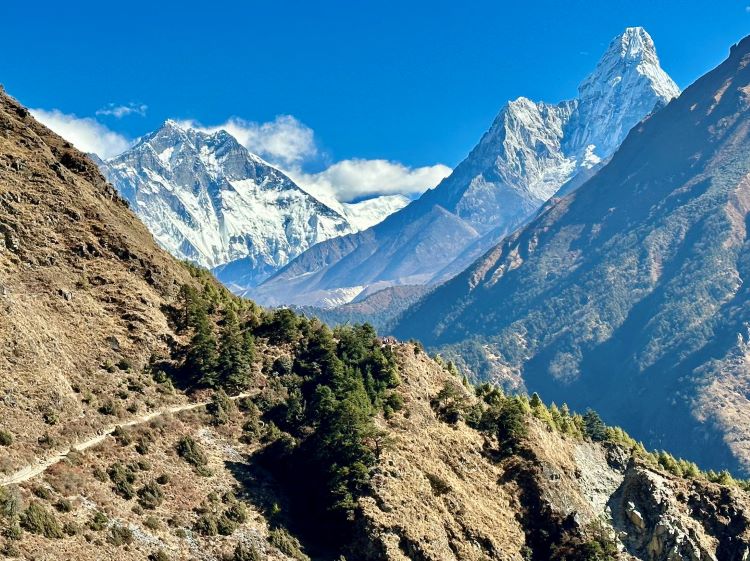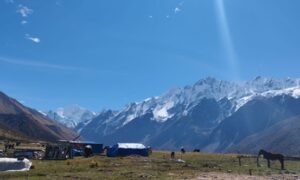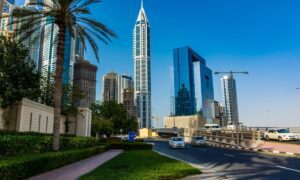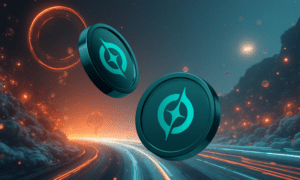Nepal is a heaven for trekkers and picture takers alike. Its emotional scenes, snow-capped peaks, old trails, and dynamic mountain societies make each step an opportunity for an epic shot. Whether you’re a prepared trekker with a DSLR or a specialist utilizing a smartphone, Nepal’s trails offer a few of the most photogenic sceneries on Soil. Based on involvement and visual requests, these four treks stand out as admin favorites for photography: Pikey Peak trek, Everest Base Camp trek, Mardi Himal trek, and Langtang trek. Each offers something interesting for the lens—from gleaming dawns and crystal-clear lakes to antiquated religious communities and grinning faces.
Pikey peak Trek
The Pikey peak trek is frequently named a covered up jewel of Nepal. This moderately lesser-known course in the Solu locale offers all encompassing views of the Himalayas, counting a magnificent view of Mount Everest from a special point. For photography darlings, Pikey peak is paradise. The early morning dawn from Pikey peak (4,065 meters) paints the sky in dynamic tones of orange, pink, and gold—perfect for wide-angle and time-lapse shots. This trek too takes you through rhododendron timberlands, conventional Sherpa towns, and Buddhist cloisters, all of which include layers of social and normal interest to your photo collection.
Everest Base Camp Trek
The Everest Base Camp trek is famous for a reason. Each turn in the path uncovers towering monsters, prayer-flag-strewn passes, and yak caravans walking along old ways. For picture takers, the path is a non-speak presentation of contrasts—raw, rough scenes close to quiet snow capped lakes; rural tea houses beneath a cover of stars; and the sheer size of Everest approaching over the Khumbu Ice sheet. Capturing dawn over Ama Dablam or the brilliant gleam of Everest at Kala Patthar are shots you’ll never disregard. From Lukla to Base Camp, each outline is commendable of a magazine spread.
Mardi Himal Trek
The Mardi Himal trek is the culminating brief trek for nature darlings and picture takers. It takes after a calmer course in the Annapurna locale, steadily rising from timberland trails to snow capped edges. The seeds of Machapuchare (Fishtail Mountain) from Mardi Himal Base Camp are among the most photogenic in Nepal. What makes Mardi Himal one of a kind for photography is the play of light and clouds at tall heights. Anticipate foggy mornings, emotional dusks, and fresh night skies filled with stars. This trek is too rich in biodiversity, permitting for large scale shots of wildflowers and fowls, particularly in spring.
Langtang Trek
The Langtang trek, found north of Kathmandu, offers a great view, culture, and openness. The trek leads through Langtang National Speak, domestic to ruddy pandas, Himalayan dark bears, and endless winged creature species—perfect for natural life picture takers. The sees of Langtang Lirung, the icy masses, and the tremendous elevated glades make dreamlike compositions for scene shots. Include to that the social lavishness of Tamang and Tibetan Buddhist legacy, and your camera will be active each minute. Kyanjin Gompa and the adjacent Tserko Ri perspective offer postcard-worthy scenes that make this trek unforgettable.
Why These Treks Are Trekkers’ Favourite
These treks are favorites not fair for their excellence but for their adjustment of experience, social submersion, and availability. They offer distinctive levels of trouble and length, catering to different trekking encounters. Pikey peak is perfect for fledglings looking for Everest to see without the swarms. EBC is a bucket-list trek that lives up to the buildup. Mardi Himal is compact, however it conveys a sensational view. Langtang offers a chance to bolster neighborhood communities recuperating from the 2015 seismic tremor whereas investigating flawless scenes. Together, they shape a dream portfolio for any photographer-trekker.
Highlights for These Treks
Each of these treks gloats famous highlights:
Pikey peak trek: Dawn over Everest, Sherpa towns, rhododendron woodlands, and Buddhist stupas.
Everest Base Camp trek: Kala Patthar perspective, Namche Bazaar, Tengboche Cloister, and Everest Base Camp itself.
Mardi Himal trek: Machapuchare Base Camp, emotional ridgelines, timberland trails, and all encompassing mountain vistas.
Langtang trek: Langtang Icy mass, Kyanjin Gompa, Tserko Ri perspective, and yak pastures.
For picture takers, the mix of human stories and breathtaking nature makes these highlights irresistible.
Best Time
The best seasons for photography in these treks are spring (March to May) and harvest time (September to November).
In spring, you’ll capture sprouting rhododendrons, clear skies, and dynamic landscapes.
In harvest time, anticipate sharp perceivability, brilliant light, and calm climate, which is perfect for high-altitude captures.
Winter (December to February) can too be enchanted for snow-covered scenes with less swarms, particularly for Pikey peak and Mardi Himal, in spite of the fact that temperatures can be amazingly cold at higher elevations.
Monsoon (June to August) is for the most part maintained a strategic distance from due to rain and avalanches, in spite of the fact that the lavish greenery can make a grouchy, emotional setting.
Culture and Teahouse Hospitality for These Treks
One of the most enhancing perspectives of trekking in Nepal is remaining in teahouses. These family-run lodges offer more than fair dinners and beds—they offer a profound see into mountain life.
In Pikey peak, you’ll encounter warm Sherpa neighborliness, regularly with discussions over butter tea and straightforward but generous suppers. Everest Base Camp is more commercial but still holds social jewels, particularly around Tengboche Religious community and Sherpa homes in Khumjung. Mardi Himal offers cozy tea houses along a recently created course, frequently run by local people enthusiastic to share their culture. In Langtang, the Tamang and Tibetan impacts are strong—except religious communities, main dividers, and yak cheese industrial facilities that deliver a social taste to the trek.
Cost for These Treks
Here’s a unpleasant taken a toll breakdown for each trek (barring worldwide flights):
Pikey peak trek: $500–$800 (7–9 days)
Everest Base Camp trek: $1,200–$1,800 (12–14 days)
Mardi Himal trek: $600–$900 (6–9 days)
Langtang trek: $600–$1,000 (8–10 days)
These incorporate grants, guide/porter expenses, teahouse settlement, nourishment, and residential transportation. Free trekkers can do it for cheaper, but contracting a direct upgrade in security and social experience—plus, it’s incredible for finding the best photo spots.
Tips for Training and Preparation
Trekking in Nepal requests a sensible level of wellness, particularly if you’re carrying photography adapt. Begin preparing at least 2–3 months in advance.
Cardio: Climbing, stair climbing, cycling, and running offer assistance progress endurance.
Strength: Center on leg quality with squats, lurches, and center workouts.
Altitude Acclimatization: If conceivable, one climbs at higher heights beforehand.
Gear Recognition: Home utilizing your camera equipped with gloves, and get it your settings in shinning or moo light.
Also, break in your climbing boots, test your rucksack, and get ready rationally for long days on the trail.
Tips for a Successful Trek
Pack Savvy: Bring lightweight adapter, waterproof layers, control banks, and additional memory cards.
Stay Hydrated: Continuously carry a water channel or decontamination tablets.
Take it Moderate: Height can hit abruptly. Acclimatize legitimately, particularly on EBC and Langtang routes.
Capture Early and Late: Brilliant hours—sunrise and sunset—are prime for photos.
Respect the Culture: Continuously inquire authorization some time recently taking representations, particularly in religious communities and villages.
Join a Bunch or Enlist a Direct: Particularly for solo travelers, this includes security and progresses your nearby interactions.
Conclusion
Whether you’re trekking for the delight of strolling or the bliss of capturing excellence through a focal point, Nepal’s trails have it all. The Pikey peak trek offers reasonable, calm ways with all encompassing rewards. The Everest Base Camp trek is the quintessential Himalayan encounter stuffed with photo openings. The Mardi Himal trek is brief, beautiful, and marvelous, whereas the Langtang trek combines elevated magnificence with wealthy social minutes. These admin favorites are not fair treks—they’re ventures into the heart of the Himalayas, culminating for memory-making and photo-taking alike.
FAQs
Q1: Do I require a proficient camera for photography amid these treks?
Not fundamentally. A DSLR or mirrorless camera gives more adaptability, but present day smartphones too capture shocking shots, particularly in great light.
Q2: Is it secure to carry a costly camera adapter on treks?
Yes, Nepal is moderately secure, particularly with a direct. Utilize cushioned camera sacks and dodge blazing costly equipment in swarmed areas.
Q3: Can I charge my camera and phone amid treks?
Yes, teahouses offer charging offices, as a rule at a little expense. Bring additional batteries and a control bank.
Q4: Are ramble shots allowed?
In most trekking regions, rambles require an extraordinary allowance. Check directions in advance and continuously regard protection and no-fly zones.
Q5: Which trek is best for apprentices interested in photography?
The Pikey peak trek and Mardi Himal trek are perfect for beginners—less elevation push, shorter term, and incredible photo spots.
Booking Process by Adventure Great Himalaya Treks:
To book any of these treks tours through Adventure Great Himalaya Treks & Expedition (P) LTD. , begin by contacting them via email at info@adventuregreathimalaya.com or phone or WhatsApp at +977-9841273869 to discuss your preferred dates, group size, and specific needs. They will provide a detailed itinerary covering these trek’s duration, highlights, cost, and inclusions such as a guide, porter, meals, accommodation, and transportation.
Prior to the trek, you will receive a comprehensive pre-trek briefing with essential information on packing, fitness preparation, and altitude acclimatization. The agency will finalize all logistical arrangements, including transportation, accommodation, and permits, to ensure everything is in place for your trek. Upon arrival in Nepal, the team will ensure that all aspects of the trek are organized, providing you with a smooth and unforgettable experience on these treks.







































